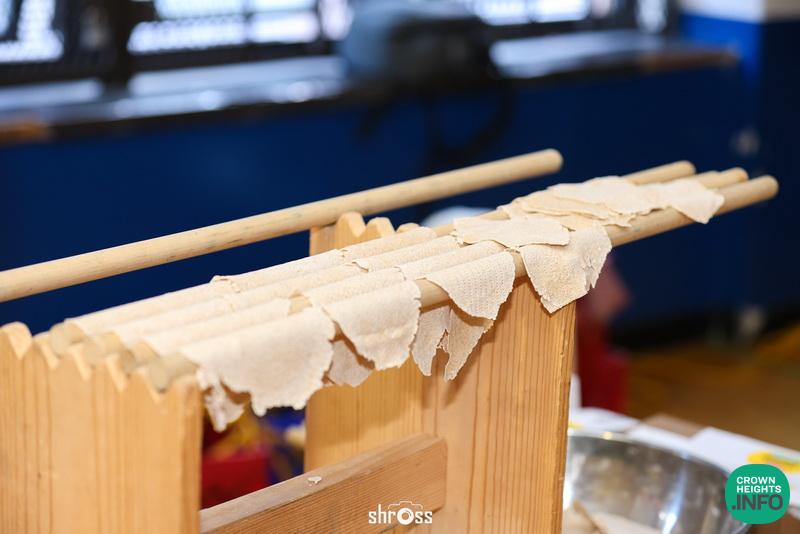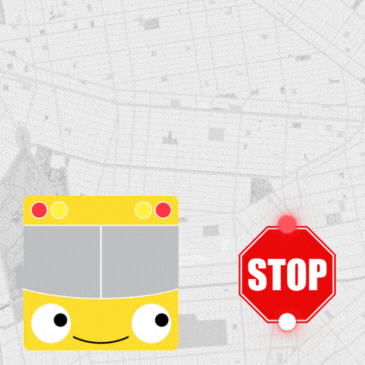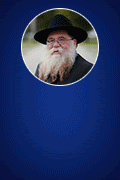
Weekly Story: Mivtzah Matzah – The Matza Campaign
by Rabbi Sholom DovBer Avtzon
I decided to bring out a point about Mivtza Matza, and all Mivtzoyim. The Rebbe often mentioned that the purpose of every mivtza, is not merely to encourage a Jew to do just one mitzvah, but rather that this mitzvah that they will now do be a catalyst to do many more mitzvos.
Being that we are now two weeks before Pesach, I utilized Mivtza Matzah to showcase it. As always, your feedback and comments are welcomed and appreciated.
Before Pesach 5714 (1954), the Rebbe encouraged Chassidim to take upon themselves the custom of old, and supply people in their community, who for whatever reason do not have shmura matzah, to have and eat it, at least during the Seder. This is just one of the many campaigns (Mivtza’s) that the Rebbe made or renewed before he officially called any campaign a Mivtza. The first one that was proclaimed a Mivtza, was Mivtza Tefillin, which began shortly before the six-day war in 5727 (1967).
As noted, the Rebbe said he is renewing the tradition of old, and it is not something that he came up with on his own.
We will now give a few examples of how this happened in previous generations by the Rebbeiim and Chassidim, and then I will mention a practical application nowadays as well.
In Russia and Europe, it was the custom of the Rabbonim (and other important religions functiaries) to supply members of their community with matza. Simply speaking, the Rebbe was saying to all of his chassidim, and at that time there were barely any shluchim or shadarim, you are not just a business owner or worker, but you are a chossid, who must illuminate your surroundings and warm every Jew you can reach.
In other words, the Rebbe was giving a practical application of the Rebbe Rashab’s statement that a chossid is a lanchernik – a lantern, whose function is to bring light and warmth in its area. In today’s terminology every chossid is an INFLUENCER, or in Chassidic terminology we all have the responsibility of being a MASHPIA.
Now we will discuss a few aspects of matza campaigns that were undertaken by the Rebbeiim themselves.
In the Russian Japanese war of 5605 (1905), the Rebbe Rashab put in tremendous effort to supply the tens of thousands of Jewish soldiers who were serving in the Russian Army, with matza and other kosher provisions for Pesach. One of the main obstacles he faced was how to ship them to the other side of Russia. Which was thousands of miles away passing through Siberia, where the soldiers were stationed and fighting against the Japanese Army.
The Russian government reserved and was using all available trains to supply the army with weapons, food and other necessities, so even those who always assisted the Rebbe expressed their misgivings that this simply could not be accomplished. After all there was no other way to transport anything there. No one thought that the authorities would allow a lot an enormous quantity of matza, which would fill up a few cars of a train to be used solely for the benefit of Jewish soldiers, in order that they have the ability to observe their holiday properly.
However, the Rebbe Rashab felt otherwise, and a meeting was arranged with a minister and he immediately understood that if the morale of the tens of thousands of Jewish soldiers were boosted, it is as important as anything else that the government could supply them with. Accordingly, the army immediately agreed, authorized and gave instructions to facilitate this transport of tens of thousands of pounds of matza and other provisions for the Jewish soldiers without delay: they are a priority!
Similarly, days after the Frierdiker Rebbe was allowed to leave Russia in 5688, (1927) he began on putting together a tremendous campaign to raise money so that matza could be sent into Russia, for that Pesach. This was much more difficult than his father’s efforts, as he needed the cooperation of the Communist authorities to deliver the packages, who were determined to erase any sign of religious observance. But his determination and tenacity paid off. After intense lobbying and diplomacy, the authorities relented, on condition that the Rebbe pays a special exorbitant fee for each package.
Almost twenty years later, after World War II, the Frierdiker Rebbe once again involved himself in obtaining and providing proper shmurah matzah, this time it was for the Jewish survivors of the War.
Tens of thousands of Jews were in displaced people’s camps, and the organizations that were supplying them with food made a commitment that if a Jew requests, his family will receive matzah, otherwise they would not receive kosher food for Pesach. This applied even to those who had requested kosher food throughout the year. Simply saying the food would be kosher for the whole year but not for Pesach. Obviously, those who hadn’t requested kosher food, never received it.
The Frierdiker Rebbe argued forcefully against this and he successfully convinced them to make it available not only to those who took the initiative to request matza, but to publicize to all Jews that Matzah for Pesach would be made available and given, even for those who were not completely observant.
Being that eating matza on Pesach is either a statement or a tradition that many non-observant Jews uphold, so therefore they agreed to do this one-time gesture for the eight days of Pesach. They thought that that would be the end of this situation.
But immediately after Pesach the Frierdiker Rebbe began campaigning and demanding that kosher food be made available for all Jews in the DP camps, and after some time his efforts were crowned with success, the organizations agreed. But his efforts on obtaining kosher food for every Jew didn’t stop then.
In 5708 (1948) the Frierdiker Rebbe sent a large group of chassidim to Ireland for a few months, to shecht animals and provide kosher meat for the Jews in Eretz Yisroel, as well as for the Jews in Europe who had survived the war.
So we clearly see that distributing the matza, although it is a very vital thing in its own right, nevertheless, it was used as a building block to go forward and encourage every Jew to observe more and more mitzvos.
Now I will relate a personal story how this concept, that mivtza matza is not merely matza for Pesach, but rather kashrus for Pesach and perhaps to inspire the person to keep kashrus throughout the year, can be applied nowadays.
In 5736 (1976) the Rebbe opened three yeshivos; one in New Haven Connecticut, another one in Cincinnati Ohio, and a third one in Seattle Washington. I was part of the group that was chosen to go to New Haven.
On Fridays all the bochurim (students) went to various places on mivtzoyim, and one of the places I went regularly was to some nursing homes. There I would speak to the Jewish residents and ask and encourage the men to put on. I would then wait until pilag mincha (around an hour before sunset) for the women to light Shabbos candles. [Some months later Rabbonim told me to obtain electric candles and have them turn them on at the proper time of sunset.]
Although the vast majority of the residents in this large facility of 360 patients were not Jewish, the administrators were very happy that their thirty to forty Jewish residents had a Rabbi to talk to, who also came and lit the candles on Chanukah and arranged a program for Purim etc., so I was unofficially, considered as the chaplain of their facility.
Before Pesach, I met with the social worker who was Jewish as well as with the administrators and requested that for the holiday of Passover they provide the Jewish patients kosher food. I felt that while they would definitely offer them the matza I would provide, but the seder and entire Pesach should be completely kosher.
Being that I had found favor in his eyes, he agreed, and arrangements were made with the local Jewish nursing home to prepare and deliver the necessary meals to them. [Being that it was coming from another nursing, it will be in compliance with all of the kitchen requirements a nursing facility must follow.]
Once these arrangements were agreed upon, the same arrangement was made with two other nursing facilities that other students went to on Friday.
[I realize that not every nursing facility would agree to this, as ordering food from a different facility entails additional expenses, but perhaps the local federations, if approached would be willing to help underwrite this expense.]
May the matza that strengthens our Emunah (faith) and gives us healing, help each person in what they need, and may we indeed be redeemed from this final golus and enter the era of Moshiach speedily in our days.
A Taste of Chasidus Hachodesh Hazeh Luchem 5734
As an introduction to this maamar, I would like to mention the following point. One of the rules in Chassidus is that there is a higher and lower level in every aspect. For example, in this maamar, the Rebbe notes that the very definition of Miracles points out that whatever occurred was higher than nature. So, there is nature and higher than nature. However, in miracles itself there are different levels of miracles. There is a miracle which is enclothed in the realm of nature, such as the miracle of Purim, [and that is the reason why Hashem’s name is not mentioned in the megilla, since people could think that it was a natural occurrence]. Then there are miracles that are definitely beyond nature, and whoever sees it immediately says that is a miracle.
But even in miracles there are levels, as we could go even higher than merely higher than nature, as Rashi notes by the plague of hail, it was a miracle inside a miracle, or as we commonly call it, a double miracle. So, there’s always a higher level and a higher level above that. Now I will try to bring out a thought of this week’s maamar.
The possuk of Hachodesh Hazeh Luchem, is from the beginning of parshas hachodesh. The possuk is informing us that while there is a Rosh Chodesh for every month there is a special Rosh Chodesh for the month of Nissan, and it is much higher than the Rosh Chodesh of the other months. So, we have to understand, what is the difference between them and how is this one greater than them.
Additionally, Chassidus teaches us, that the nature of the world is, that in order to receive something from heaven, we must do something on our part in order to be worthy to receive it. This point can be learned from the possuk which we normally say in the haftarah when Rosh Chodesh comes out on Sunday. King Saul’s son, Yonason, said to Dovid, because you will be absent from your place at the table, you will be remembered.
Chassidus explains that “absent” in this possuk means you nullify yourself in front of Hashem, and subsequently the greater the level of nullification the more G-dliness can shine upon you.
So, if the revelation of Rosh Chodesh Nissan is higher than all other months, it must mean the preparation i.e. the nullification to be able to receive this greater revelation was also on a higher level.
The reason why the Moon disappears is because at that time the moon is in a direct line with the Sun. The following day as it moves away a little bit it reappears, as a sliver of the Moon reflects to the Earth the Sun that is shining on it. In Chassidic terminology this is referred to as the unity between the Sun and the Moon, which corresponds to the connection and unity between the holy name of Hashem and the name of Elokim. Hashem created the world through His holy name; however, He conducts the world through the shield of His name Elokim.
In every Union they can be and in fact there are two situations in the unity: one is passive and the other one is when we focus on it.
A passive approach represents the time that everything in our Union or Unity, is going good and it continues on the same path without putting in much thought and or effort, like a business that the owner is happy when he looks at the weekly report the manager sends him, but he himself doesn’t get involved. But then there is a time that we want to strengthen our connection to make it stronger and better, and for that we must strengthen and put an effort in our Unity.
In Chassidic terminology the lower level is called Yichud Chitzoni, while the higher level is ca;;ed Yichud Pnimi.
We can now answer the question of what the difference between Rosh Chodesh Nissan and all other months is. By all the months, the name of Elokim which represents nature is revealed. However, by the month of Nissan, Hashems holy name is revealed.
We see this concept from what the midrash states that when Hashem chose to create a world, He decided to have heads of the month. When He chose the Jewish people to become His Nation, He chose the month of Nissan to be the month of their Redemption and to be the beginning and head of all months. So that Midrash clearly states that all the months are connected to the natural way Hashem chose to create and conduct the world in, while the month of Nissan is connected to a level higher than nature, as seen from rhe fact that Hashem redeemed an entire nation from the land of Egypt which until then not even a single slave was able to leave as a free man.
Or it can be explained, the revelation that comes every month is from Hashem’s holy name, but from the lower level in it which is connected to the world, while the month of Nissan is connected to the higher level of Hashem’s holy name.
Rabbi Avtzon is a veteran mechanech and the author of numerous books on the Rebbeiim and their chassidim. He is available to farbreng in your community and can be contacted at avtzonbooks@gmail.com.













Mushkie
“I would then wait until pilag mincha (around an hour before sunset) for the women to light Shabbos candles”. If a non-observant woman lights candles early, thereby acceptibg shabbos an hour early, won’t that cause an extra hour of chilul shabbos? Same when doing neshek, if the woman agrees to light 18 minutes before shkiya and later turns on lights etc, didn’t I cause her to do chilul shabbos?
Sholom Avtzon
Yes and no. Almost all of them were unable to do anything on their own, which is halachichly considered meluchah. It was in 1977 before cell phones.
However, because of your reasoning for the few that might be able to, and other reasons, such as when no one can help them light a match, rabbonim advised me to obtain electric ones and they would be lit as close to shkiah as possible
Mushkie
Thanks, but a few non-Chabad participants in our weekly virtual farbrengen have asked about mivtza neshek: If a non-observant woman agrees to light shabbos candles 18 minutes before shkiya, by accepting shabbos at that time, are we not causing her to be mechalel shabbos and extra 18 minutes? I never thought if that and wonder what the response should be. Someone must have addressed this question!
Mushkie
I asked a popular mashpia who said that when the woman does the mitzva of lighting candles, you can assume that it will cause her not to mechalel shabbos, at least for the short time after she did the mitzva. But that doesn’t really make too much sense. When I questioned further, the emashpia said that we just must do the mivtza neshek because the Rebbe said so, and not worry about anything else.
Tamar
“this mitzvah that they will now do be a catalyst to do many more mitzvos” – can you confirm that the Rebbe once said that shabbat and kashrut are connected to all the mitzvot? (Which is why a dati is defined as one who keeps shabbat and kashrut).
Rabbi Sholom Avtzon
I don’t have the time to get into all the details, but there are major points that are being missed.
Nowadays a non observant Jew, generally speaking is considered a Tinok Shehnishba, one who fell captive as a child. So their actions are more akin to being done BiOhness and not bishiguguh, something does by accident and not done by mistake.
This is somewhat similar to a young child who says Hashems name a few times would you friends say don’t teach a child a brocha because they will say a brocha livahtuluh- mentioning Hashems name by mistake.
Isn’t this the meaning of the children are jumping upon a sefer and it gives Me [Hashem] tremendous pleasure.
I am responding in order that no one should say there is no answer, but as noted I am presently pressed for time and I don’t have the space to address it fully